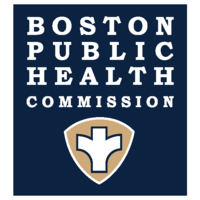Pubic Lice
This fact sheet answers frequently asked questions about pubic lice.
Public lice, sometimes called crab lice or "crabs” are parasitic insects found in the pubic or genital area.
The basics
How can a person get pubic lice?
Pubic lice usually spread through sexual contact and are most common in adults. Pubic lice may also spread from close personal contact or contact with an infested persons clothing, bed linens, or towels. Pubic lice cannot live away from a warm human body for long. Pubic lice cannot spread by sitting on a toilet seat.
Who can get pubic lice?
Any sexually active person can get pubic lice. You can find pubic lice worldwide and in all races, ethnic groups, and levels of society.
Where do pubic lice live?
Pubic lice usually live in the genital area on pubic hair. They may also live on other coarse body hair, such as hair on the legs, armpits, mustache, beard, eyebrows, or eyelashes. Lice found on the head are head lice, not pubic lice. Animals cannot get or spread pubic lice.
What do pubic lice look like?
Pubic lice have three forms: the egg (also called a nit), the nymph, and the adult.
- Nit: Nits are pubic lice eggs. They can be hard to see and attach firmly to body hair such as pubic hairs. They are oval and usually yellow to white. Pubic lice nits take about 6-10 days to hatch.
- Nymph: Nymphs are immature pubic lice that hatch from the nits (eggs). Nymphs look like an adult pubic lice but they are smaller in size. Pubic lice nymphs take about 2-3 weeks after hatching to mature into adults capable of reproducing. Nymphs survive on blood by biting.
- Adult: Adult pubic lice are tan to grayish-white in color and look like miniature crabs. Pubic lice have six legs; the two front legs are very large and look like the pincher claws of a crab. Females lay nits and are usually larger than males. Pubic lice must feed on blood to survive. If pubic lice fall off a person, it dies within 1-2 days.
Symptoms
What are the symptoms of pubic lice?
Signs and symptoms of pubic lice include:
- Itching in the genital area
- Visible nits (lice eggs) or crawling lice
Testing & prevention
How can I find out if I have pubic lice?
Adult or nymph pubic lice are visible and often attach themselves to more than one hair. They generally do not crawl as quickly as head and body lice. Pubic lice nits or eggs found in the pubic area suggest infestation that needs treatment. Pubic lice and nits are large enough to see with the naked eye, a magnifying lens may be necessary to find lice or eggs.
If you are unsure whether you have pubic lice, see a health care provider for a physical exam.
Where can I get tested?
Most health care providers offer testing for pubic lice and other STIs. To find a health care center in a neighborhood near you, call the Mayor’s Health Line (MHL) at 617-534-5050 or toll-free: 1-800-847-0710.
How can you protect yourself from getting pubic lice and other STIs?
The only 100% effective way to prevent pubic lice is to not have sex.
If you do have sex, you can limit your risk by taking the following steps:
- Always use a latex or polyurethane condom or barrier (dental dam) when having anal, vaginal and/or oral sex
- Condoms made from "natural" materials may protect against pregnancy but NOT STIs
- Reduce your number of partners if you choose to have sex
- Talk with your partner about their STI status and getting tested
- Talk with your health care provider about safer sexual practices and getting tested
- Understand that having sex while under the influence of drugs and/or alcohol can increase the likelihood of unprotected sex
- Contact your health care provider if you experience any symptoms
Treatment
Can you treat pubic lice?
Yes, using special shampoos and creams can get rid of pubic lice. Check with your local drugstore to see if these products are available. Make sure your partner also gets treated at the same time to prevent getting scabies or pubic lice again.




